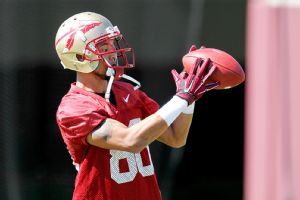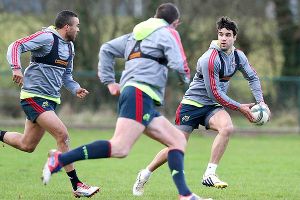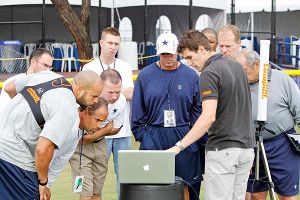Tide Run This
Veteran
@klutch2381 scared me with the thread being upped I was expecting one of those summer casualties.
@klutch2381 scared me with the thread being upped I was expecting one of those summer casualties.

People talk about us missing KB, but I actually think we will miss Shaw the most. KB had some huge games that skew his numbers and production and several okay games. Shaw was just a model of consistency. He was always open, rarely dropped passes and someone you could count on to move the chains. He was dependable as fukk.
"fukk all that, 'happy to be here,' shyt y'all want me on."


What is your projection for the replacements for KB and Shaw. I agree with your assessment on Shaw that nikka was pretty reliable when it came to making a big play i'll never forget his 3rd down and forever catch to get us moving vs UF he got popped pretty good.
I'm scared Jimbo gonna be forced to go into the rotating mode I hated with the WR's i'm hoping there is a clear cut 3-4 WR's ahead of the game come Clemson game.
Yeah, I hope he settles on 3-4 as well. Honestly, I don't like Bobo on the outside. I hope he plays inside this season. I wasn't feeling that in the spring game. From everything I've heard, the WR's have been putting in work. I expect Rudolph to play more than Ermon as far as the freshman WR's. They say Lane is 205, but I saw dude as Hooters two weeks ago and I don't believe that shyt, like, at all.
I expect Jones to take KB's spot and Whitfield or Jesus to fill Shaw's.
DAP and POS REP for not mentioning WR #89 ___________________________

 anytime he was around the ball something bad seemed to happen or nearly happen.
anytime he was around the ball something bad seemed to happen or nearly happen.Twenty-two point eight, Jacobs confirms, and history is made. Cook's top speed during his 40-yard dash -- 22.8 mph -- pushed him past veteran receiverRashad Greenefor the team's best mark, and the other players quickly offered congratulations to the rookie. Greene, too, was impressed, but also inspired.



Florida State University quarterback and Heisman Trophy winner Jameis Winston has purchased a large disability and "loss of value" policy that provides him with $8 million to $10 million in insurance coverage, a source close to the situation told Yahoo Sports.
According to the source, Winston is the first returning Heisman Trophy winner since former Oklahoma quarterback Sam Bradford to purchase preseason loss of value coverage, though other returning winners have purchased "total permanent disability" coverage during that time frame. Winston's policy is based on a projection that he will be selected in the top 10 of the 2015 NFL draft and would theoretically pay out if he fell out of the first round due to injury or illness.
Though Winston's father recently said he wanted his son to play two more football seasons for the Seminoles while earning his degree, industry experts say underclassmen who purchase insurance policies as large as Winston's almost always enter the NFL draft following the season for which they purchased coverage. That reality is largely due to the hefty premiums players have to pay out of pocket (often with the help of their families) to protect themselves. Policies the size of Winston's can carry a $55,000 to $60,000 premium payment per year, which industry sources say most players have to obtain by financing.
While the NCAA sponsors a disability insurance program for some college athletes in select sports that allows them to obtain total permanent disability coverage and a loan to cover the premium on that portion of their policy, it does not sponsor a program that offers loss of value coverage.
Winston, 6-foot-4, 235-pounds, burst onto the scene for Florida State last year as a redshirt freshman, throwing for 4,057 yards and 40 touchdowns while leading the Seminoles to an ACC Championship and a comeback victory against Auburn in the BCS National Championship Game.
He's a goner. Anyone with common sense knew that. It's his future. He can do w/e he want